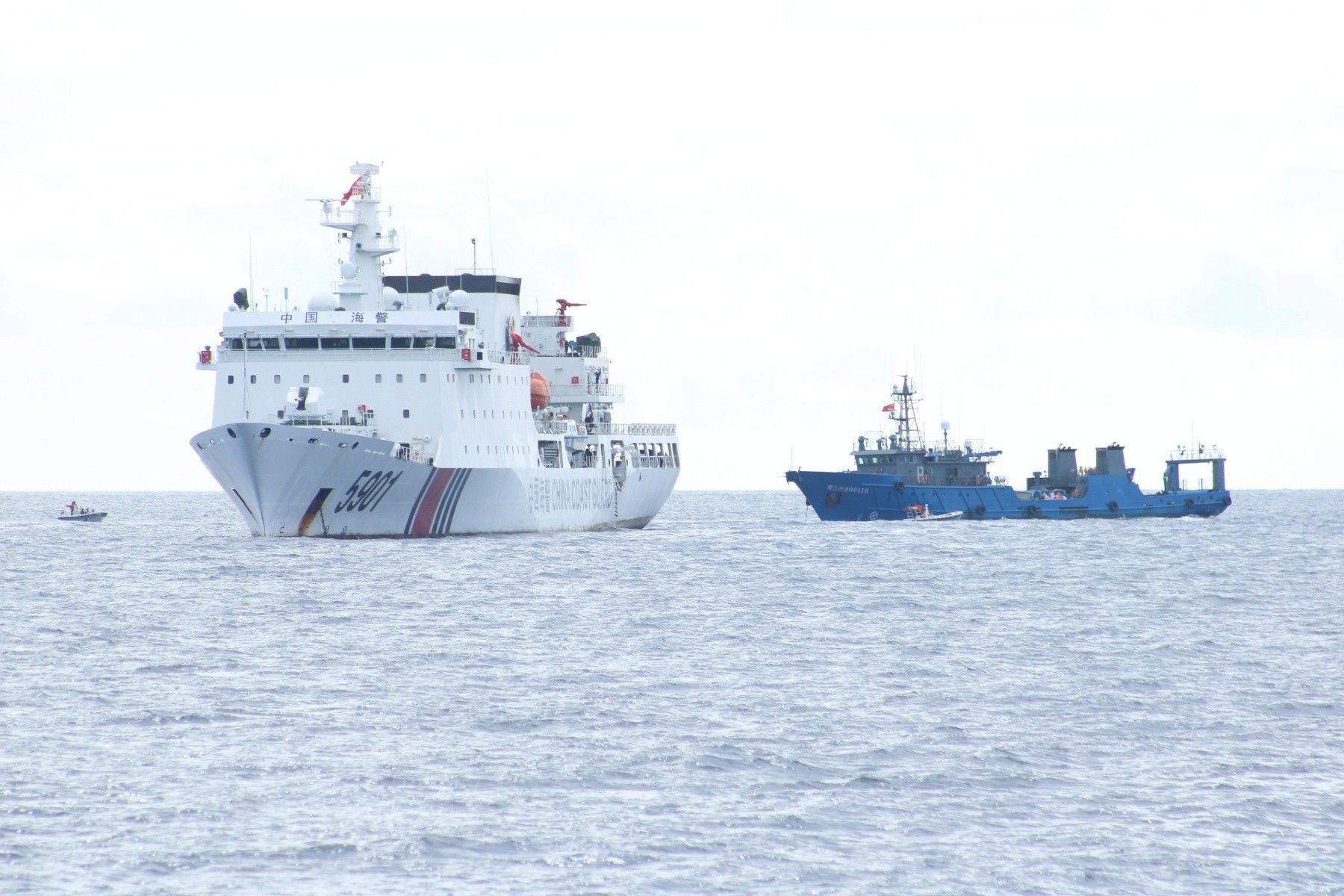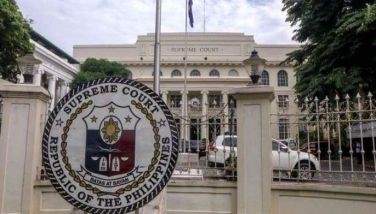Government unfazed by China protest vs new laws

MANILA, Philippines — The Marcos administration is unfazed by China’s protest against the enactment of two laws that reinforce the Philippines’ entitlements and responsibilities within its maritime zones.
President Marcos signed last week the Maritime Zones Law and the Archipelagic Sea Lanes Law – measures that are seen to reflect the Philippines’ resolve to protect its marine resources and assert its sovereignty, sovereign rights and jurisdiction over its maritime zones.
The enactment of the two laws did not sit well with China, which claims practically the entire South China Sea, including areas that are within the Philippines’ exclusive economic zone (EEZ) and continental shelf.
China, whose expansive claim in the South China Sea was voided by an international arbitral court in 2016, summoned the Philippines’ ambassador in Beijing to protest the new laws. The Chinese foreign affairs ministry called on the Philippines to respect China’s “territorial sovereignty and maritime rights and interests” and to stop unilateral actions that may expand disputes and complicate the situation, according to earlier reports.
Asked to react to China’s latest actions, Marcos said the Philippines’ stance on the maritime row stays the same.
“What they (China) are saying is they object to it (enactment of the two sea laws). They said that we do not agree and... that they (would) continue to protect what they defined as their sovereign territory. Of course, we do not agree with their definition of sovereign territory,” the President told reporters in Tagaytay City yesterday.
“So, wala naman pinagbago dahil ganoon pa rin ang sitwasyon natin. Ganoon pa rin ang position natin (So nothing has changed because our situation stays the same. Our position remains the same),” he added.
The Maritime Zones law identifies the archipelagic baselines under the 2009 Philippine Baselines Law as the basis upon which the maritime zones of the Philippines are measured. It identifies the Philippine internal waters, defines the archipelagic waters, the full entitlement of a 12-nautical mile territorial sea, the declaration of a 24-nautical mile contiguous zone from the baselines and the 200-nautical mile EEZ and continental shelf where the Philippines can exercise sovereign rights and jurisdiction.
The Archipelagic Sea Lanes Law, meanwhile, defines the sea lanes that vessels may legitimately take within Philippine waters to protect the country’s sovereignty. Under the United Nations Convention on the Law of the Sea (UNCLOS), archipelagic states like the Philippines may designate archipelagic sea lanes and air routes suitable for the continuous and expeditious passage of foreign ships and aircraft through or over its archipelagic waters and the adjacent territorial sea.
The South China Sea is a strategic waterway through which $5 trillion in shipments pass every year. Vietnam, Malaysia, Brunei and Taiwan also claims parts of the resource-rich area.
Sue China
Senate President Pro Tempore Jinggoy Estrada has urged the government to sue China before the Permanent Court of Arbitration (PCA) or the United Nations over its drawing of baselines around Bajo de Masinloc.
Estrada raised bringing Beijing to court again after the PCA invalidated its sweeping claims over the South China Sea after China drew its baselines over Panatag (Scarborough) Shoal following the passage of the Maritime Zones and Archipelagic Sea Lanes laws.
“I urge our government, the Department of Foreign Affairs (DFA) and the Office of the Solicitor General to seriously consider the possibility of bringing this matter before… The Hague or even to the United Nations. Let’s disseminate to these international bodies our new maritime laws for their reference and let’s formally bring to their attention the recent actions of the PRC (People’s Republic of China),” he added.
The DFA has previously summoned Chinese Ambassador Huang Xilian to protest China’s actions.
Estrada stressed the Philippines has jurisdiction over Panatag Shoal because it falls within the country’s EEZ.
Meanwhile, the National Mapping and Resource Information Authority (NAMRIA) yesterday said that the agency has delineated maritime zones and archipelagic sea lanes following the enactment of the two maritime laws.
“We have already delineated the maritime zones and archipelagic sea lanes but these are subject to a series of vetting and consultation with the national government and various agencies of the government. We need to follow the process,” NAMRIA administrator Peter Tiangco told The STAR.
During the Kapihan sa Manila Bay media forum, Sen. Francis Tolentino, the principal author of the two laws, said that NAMRIA should start charting the country’s new map reflecting its maritime domain and entitlements under the newly signed laws.
Reacting to Tolentino’s statement, Tiangco revealed that redrawing the country’s map may face hurdles as it “needs to undergo many clearances before we can actually publish the new map.”
“It shall cooperate with the concerned government agencies and organizations in determining the coordinates of the identified archipelagic sea lanes,” he added.
He noted that the two newly signed maritime laws only provide general description and not specific coordinates.
The specific coordinates of the sea lanes are yet to be affixed in coordination with the International Maritime Organization and International Civil Aviation Organization, pursuant to the Archipelagic Sea Lanes Law and the provisions of the UNCLOS.
He also maintained that the maritime zones and archipelagic sea lanes defined under the new laws are fully aligned with the international law.— Bella Cariaso
- Latest
- Trending


























